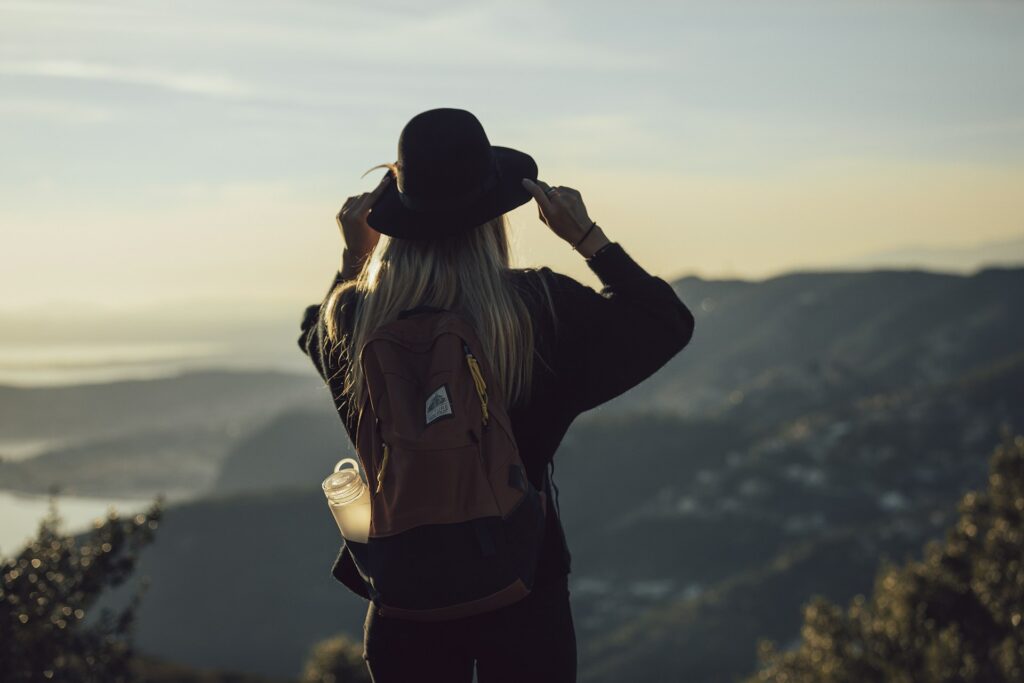There comes a moment when the world feels too heavy, when conversations stretch longer than your patience, and even the comfort of familiar routines begins to feel like a cage. During times like these, traveling alone isn’t just appealing—it feels necessary. But how do you travel when what you crave most is solitude?
Understanding the Desire for Solitude
The Pull Toward Quiet
Seeking time alone doesn’t mean you dislike others. It means you’re choosing to reconnect with yourself. The quiet you experience on a solitary journey is different from silence at home. On the road, silence feels purposeful—like the world is giving you space to breathe again.
The Emotional Reset
Traveling alone gives you room to let your thoughts settle. When you step away from routines, your mind reorganizes itself. Each sunrise can feel like a fresh page. A walk through a quiet forest, waves against rocks, mountains that stand completely still—these become mirrors for your inner world.
Giving Yourself Permission
Many people never take a solitary trip because they believe they need a reason or a story to justify it. But needing space is enough. Wanting quiet is enough. Wanting to feel like yourself again is enough. The journey begins the moment you allow yourself to honor that need.
Deciding Where to Go
Choosing the Right Environment
The destination you choose shapes the kind of solitude you will experience. Forests and mountains offer a grounding stillness. Seaside towns give you distance and calm. Desert landscapes provide clarity and space. Instead of looking for a place filled with things to do, look for how the place feels when you imagine waking up there alone.
Following Your Inner Weather
If your heart feels chaotic, choose somewhere soothing—someplace where the air is gentle and the pace is slow. If your spirit feels stuck, choose somewhere that challenges you—hikes, long roads, unfamiliar views. If you feel numb, choose a place with texture and character—cobblestone streets, wooden cabins, salty breezes.
Choosing Simplicity Over Attraction
When traveling for solitude, the goal is not to check off landmarks. It’s to feel present. Solitary travel thrives in spaces where time moves slowly: a cabin near a lake, a remote beach village, a quiet hostel in the countryside. These places invite you to simply exist.
Preparing for the Journey
Packing With Intention
Packing light will shape your experience. Bring clothes that are easy to move in, a journal to capture passing thoughts, a book that feels comforting, and one or two items that make you feel grounded, like a favorite sweater or a familiar scent. The fewer things you carry, the freer you move.
Staying Self-Sufficient and Calm
Traveling alone feels more peaceful when you are prepared. This doesn’t mean carrying everything—it means having what allows you to relax. For many solo travelers, a portable power station becomes invaluable. It allows you to charge your phone, camera, or laptop even in remote locations. With it, you can stay lightly connected when needed—without having to rely on crowded cafés or shared charging areas. It helps maintain your independence, making solitude feel secure instead of isolating.
Preparing to Face Your Thoughts
Solitude has a way of revealing what we’ve been avoiding. When you’re alone, there are no distractions to hide behind. But this is exactly where healing begins. Expect emotions to appear. Welcome them. You don’t need to solve them—just witness them.
Experiencing the Journey
Moving at Your Own Pace
Time stretches when you travel alone. Mornings can linger. Meals can become meditative. You decide when to walk, when to stop, when to watch the sky shift colors. The freedom to choose your pace is one of the quiet joys of solitude.
Listening to the World Around You
When the noise fades, your senses sharpen. You notice small things: the echo of your footsteps, the rustle of leaves, the warmth of sunlight through a window. You hear your own inner voice more clearly. You may realize it has been whispering to you for a long time.
Letting Small Moments Become Meaningful
Often, the most memorable parts of a solitary journey are not grand sights, but gentle pauses. The moment your coffee tastes unusually rich. The moment the horizon looks endless. The moment you feel your shoulders finally relax. These are the moments where you return to yourself.
The Challenges of Being Alone

Meeting Loneliness with Compassion
Loneliness may appear-and that’s okay. Loneliness speaks in honest language. It tells you what you miss, what you value, what you’re afraid to lose. Instead of pushing it away, sit with it. It has something to teach you. Once you’ve reflected, you can find help here in the form of virtual companions who can help you reform connections and understand what you’re looking for on a deeper level.
Facing Yourself Fully
When your schedule isn’t filled and your attention isn’t scattered, you meet yourself directly. Your regrets. Your hopes. Your quiet strength. This can feel uncomfortable, even painful—but it is also deeply liberating.
Trusting the Uncertain Moments
There may be days when the journey feels unclear. You may question your choice. These moments are part of the transformation. Growth rarely announces itself while it’s happening. Trust the unfolding.
Returning Home
Feeling the Shift
When you return, your home will look the same. Your routines may resume. But something inside you will feel different. You will move with more awareness. You will speak with more intention. You will protect your peace more fiercely.
Holding Onto Stillness
The challenge is not finding peace—it is keeping it. You can create small rituals to carry solitude into daily life. A slow morning. A walk without your phone. Time outside before the day begins. These are your souvenirs.
Remembering That Solitude Is Always Accessible
You do not need a plane ticket to return to yourself. Solitude is a practice. Travel simply gives you the space to remember how to find it.
Conclusion
Traveling alone is not running away. It is returning—to your breath, to your clarity, to the quiet truth of who you are. It is choosing to nurture your inner life rather than constantly react to the outer one. The tools you bring—like the ALLPOWERS portable power stations—are less about technology and more about enabling your solitude.

